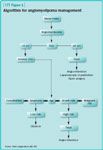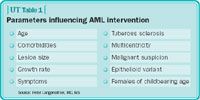Article
Renal AML: The role of laparoscopic cryoablation
Author(s):
Five-year recurrence and disease-free survival rates for laparoscopic cryoablation are equivalent to those of standard open surgical techniques.

Recently, at the Medical College of Wisconsin (MCW), we published the largest series of AMLs treated with laparoscopic cryoablation (J Urol 2006; 176:1512-6). This technique is significantly less demanding than a laparoscopic partial nephrectomy, and can be performed by urologists who have mastered the basics of renal laparoscopy.

Identifying appropriate lesions
AMLs are benign lesions that are easily identified with standard imaging techniques, including ultrasound, computed tomography, and magnetic resonance imaging. CT remains the imaging modality of choice.

The rationale for treating lesions smaller than 4 cm is patient-specific. These small AMLs, less than 4 cm in size, can be safely followed for 3 to 12 months with serial CT scanning to estimate a growth rate.
Factors that must be considered when electing to treat these smaller lesions are identified in the table. No specific guidelines for risk stratification or treatment strategies currently are available or are being developed. Balancing age, comorbidities, and growth rate allows for the assessment of downstream risk. Extra consideration must be given to patients with tuberous sclerosis or multifocal lesions and to younger patients, as the AML growth rate has been shown to be increased among these populations. Women of childbearing age should consider preemptive ablation because they are at increased risk for spontaneous rupture of these lesions during pregnancy.
Selecting a treatment approach

















